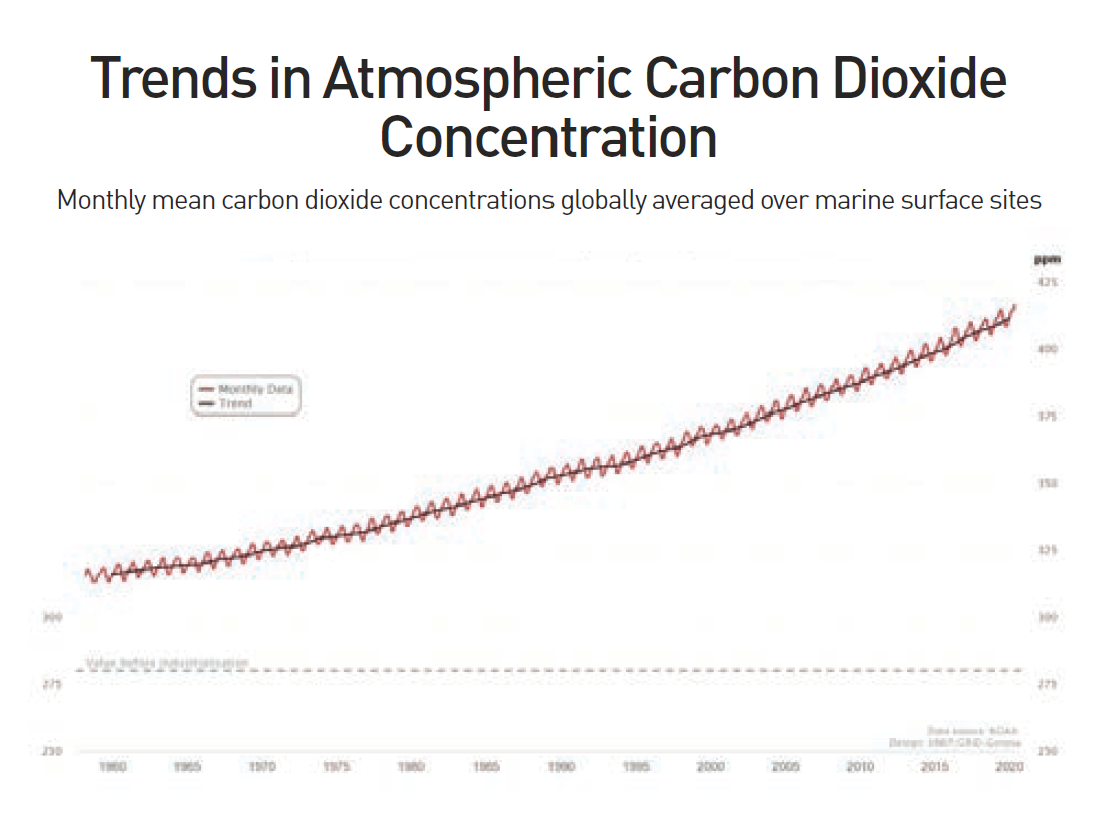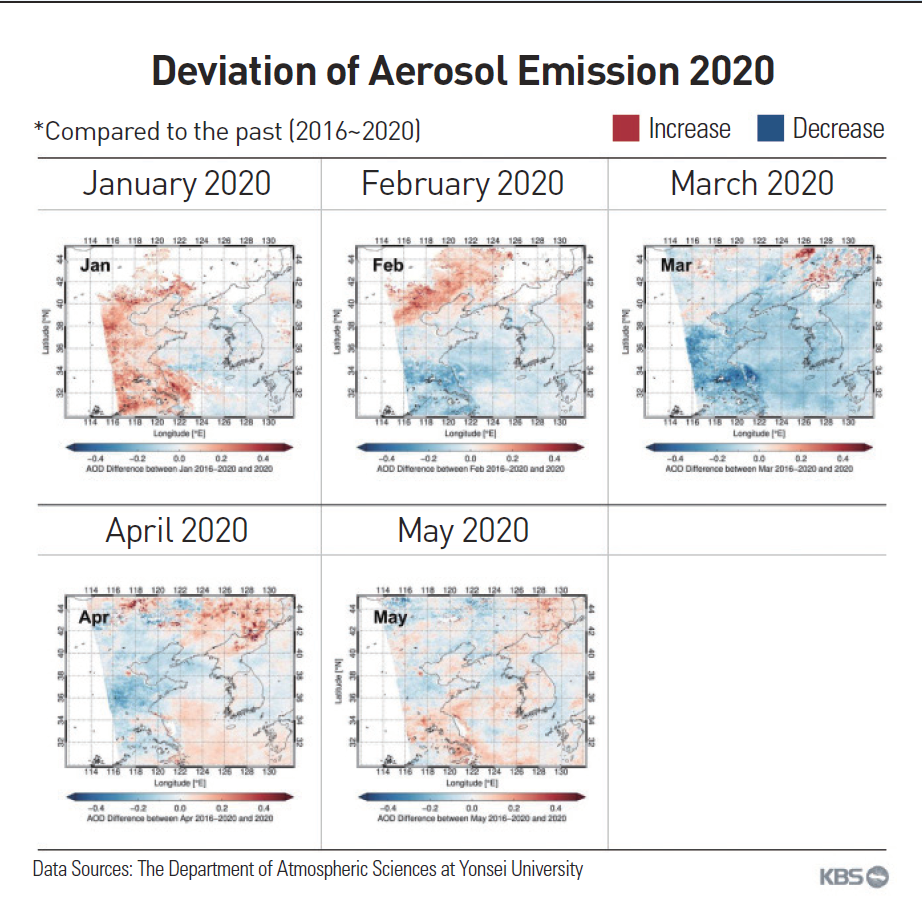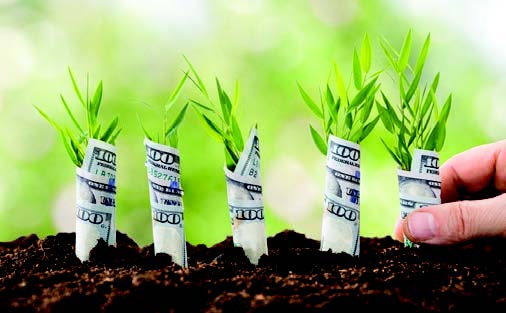Half of the year has passed since the start of the outbreak of the pandemic. Half a year can be long for some, but on the other hand, it is short for others. In particular, it is the very moment for Earth. During this brief time, people have settled into “new normal” lifestyles as they are apt to the shifting worldwide circumstances. It reveals that people now grasp the narrow sense of circumstances. That is, it is time to understand the broader sense of the circumstances: the environment. It is because understanding the shifting environment can be a signpost that lets the post-Coronavirus Disease-19 (COVID-19) generations know where to start from. Hence, the Sungkyun Times (SKT) will report on the correlation between pandemic circumstances, the environment, and the economic impact.
Earth Before Pandemic Outbreak
Common Sense on Environmental Problems
Phrases that criticize environmental problems, such as “polar bears forced to stay on land with less sea ice” and “sea turtles threatened from plastics” are common in mass media. Moreover, Time Magazine’s 2019 Person of the Year was Greta Thunberg, who had inspired a global movement to fight for environmental problems from human activities. She gained popularity since last year, because the world community has kept its eye on climate change and the environmental crisis. The environmental problem, however, has not been resolved although the public has recognized the issue. It is because economic development offers little incentive to help the environment. This becomes the cause of de facto negligence of the public toward environmental issues.
The Real State of Earth Environment
This public dereliction of duty toward the environment intensifies problems.
1. Atmospheric Environment
In 2019, the World Meteorological Organization (WMO) reported that the global annual concentration of carbon dioxide had increased by 2.23ppm over ten years on average. Furthermore, according to the National Oceanic and Atmospheric Administration (NOAA), radiative forcing, which causes global warming through greenhouse gases, had increased by 43% compared with the data in 1990. The point of this situation is that carbon dioxide accounts for increased greenhouse gases. Also, because the increased quantity of carbon dioxide is not the carbon-14 isotope, it proves that the bizarre augment of the concentration has resulted from human activities.
2. The Waste Problem
The Great Pacific Garbage Patch in the North Pacific Ocean is the waste island that is seven times the area of the Korean Peninsula. The island is known as a contributor to the increase of the microplastic concentration in water. Also, marine organisms are often deluded by plastic wastes and eat them, as the waste is like a portion of food for organisms. Eventually, humans eat the marine organisms polluted with plastics or sip water full of microplastics. That is, humans are also victims of the waste island, along with marine life.
3. Ecosystems
Human activities lead to climate change, and ultimately climate change disturbs the ecosystem. In 2019, the Intergovernmental Science-Policy Platform on Biodiversity and Ecosystem Services (IPBES) presented a paper that explains that over one million species are endangered. It means biodiversity will plunge. Destroyed biodiversity creates a vicious circle which makes the ecosystem inanimate. In the end, the decimated ecosystem undermines the fundamental customs of humans.
In the late 2019, as COVID-19 spreads worldwide, the world seems to change in an unprecedented way. As unconventional human activities have continued, the environment seems to be prepared for reacting to these unprecedented changes.
Earth After Pandemic Outbreak
As COVID-19 spreads over worldwide, international interactions have been deeply hindered by movement restrictions in many countries. As the economic cycle becomes more cramped, the representative of America’s stock market, the international economy has undergone severe depression. In the midst of the rapidly changing world and harsh social distancing policy, the environment has been influenced both positively and negatively.
Economic Stagnation: How Has Atmospheric Environment Been Changed?
1. Change in Greenhouse Gases
The Centre for Research on Energy and Clean Air (CREA) said carbon dioxide emissions in the Chinese metropolitan area had dwindled at least 25% from this February to March. Along with this positive observation, however, the concentration of carbon dioxide in the world recorded the highest. The United Nations Environment Programme (UNEP) said the pandemic helped to create dips in carbon emission levels in several countries for sure, but these were only finite cases which resulted from a downscaled production rate. Except for the difference in factory operations, the core of global warming, energy infrastructure had not been modified at all before and after the pandemic. If the architecture of human energy usage remains the same, the atmospheric carbon concentration will rise linearly along with the current tendency.

2. Change in Fine Dust
Korea had suffered from D weather status because of fine dust, but the frequency of the bad days was greatly reduced. The Korea Meteorological Administration said that the average Particulate Matter (PM10) in Seoul was recorded as 49.1㎍/㎥, which is around 50% lower than the same period last year. It was because the operating rate of Chinese factories dropped sharply after the pandemic, which has been the main cause of the Korean fine dust problem. Working from home as a part of social distancing has also contributed to improving air quality as this had led to lower traffic volumes. After March, however, as economic activities resumed, aerosol emissions, which fine dust takes a larger part of, have returned to the degree of the past before the pandemic. Prof. Kim Jhoon at the Department of Atmospheric Sciences at Yonsei University reported that aerosol emissions in and out of Korea reduced from February to March, but it has come back to ordinary levels. The two main representatives of air pollution, greenhouse gases, and fine dust examples let people know that the pandemic improved air quality. Economic activity returning to the same levels of the past, however, will aggravate the air condition.

Between Hygiene and Environment, Disposable Waste
As pandemic prevails longer, the usage of disposable items has soared for preventing infection. For instance, the Korean government relieved environmental regulations from February, which limits the use of disposable products. Also, common disposable items, like masks that people use every day to prevent infection, are constantly being thrown away, and medical wastes related to COVID-19 have become more and more piled up. Such an absolute increase in the amount of waste discharged is visualized as a “garbage mountain” formed in the hillside of Pocheon-si, Gyeonggi-do. The garbage mountain is a clear pile of illegal waste, and a drop in the price of recycled waste is pointed as the cause of its formation. The overseas selling of waste stopped as an aftermath of COVID-19, and the supply of waste has increased while the demand for disposing of it has not.
Ecosystem, the Result of All Changes
Before the problem of garbage from the prolonged pandemic, the ecosystem has time for rehabilitation during the intense social distancing of humans. In late March this year, as international movement restrictions were enforced, there was a creature that appeared through the restriction on the Rushkulya River in India. They were a herd of 800,000 Olive Ridley Sea Turtles returning to spawn, and they are listed on the Red List: the endangered species list of the International Union for Conservation of Nature (IUCN). Before the pandemic, this beach was harsh for the turtles to nest on due to frequent access by people and the waste problems. After the movement restriction was imposed, however, human access decreased, and the environment improved a lot. Therefore, the ecosystem directly reflects the changes that have occurred by alterations in human activity. As economic activity resumes, however, the waste problem has become more severe, and the ecosystem is being threatened again.
The Way Post COVID-19 Generation Should Move Forward
Humanity Gets Lessons from Pandemic
When human activity almost ceased, the atmosphere became clear, and a healthy ecosystem was formed where there was less waste. Simultaneously, however, disposable and marine waste problems intensified. With the pandemic, humanity now proved the correlation between human activities and environmental destruction. Further, the organic relation between humans-environment-animals is embodied by the pandemic. According to the United States Agency for International Development (USAID), 75% of a novel or recurrent infectious disease like COVID-19 are zoonotic viruses derived from animals. Environmental destruction from human activity raises the chances of humans encountering wildlife, which threatens the loss of habitats of animals. This provides the concern of bringing about the novel pandemic. A decrease in human activity, however, can be the delivery time for nature to heal itself. Conclusively, between humanity and animals, there is the environment, and when a healthy environment or ecosystem is maintained, a novel zoonotic pandemic will be prevented by dividing human and animal areas.
What is the next step?
1. Non-mainstream yet, Sustainable Development
Sustainable Development (SD) is a concept to achieve human development goals while preserving natural resources and ecosystems required by the society and economy. The origin of SD is a definition in the Brundtland Report of the United Nations (UN), describing “advancement that meets the needs of the present without compromising the ability of future generations to meet their needs.” On the other hand, Economics judge the country’s economic state depending on the size of products and services that the country produced. Analyzing the development trend of a country and operating enterprise is conducted based on economics, so the current socio-economic frame is rooted in this economic concept. About 30 years after the publication of the Brundtland Report, it is true that the concept of SD has now gained popularity, and many countries or companies continue to put their efforts in to realize SD. The main agents in this movement, however, are only a few. Rather, some countries and companies have recently shown an action that retrogresses against SD. It is because conventional socio-economic thinking believes this reverse movement is profitable. Allowing external costs in economics is one of the factors that prevent the international implementation of SD. That is because it is a custom to account for economic transactions as external costs arising from environmental problems. The inability of decision-makers to aggressively consider the environment when making economic decisions is from the current socio-economic frame that is, the outdated frame that does not support SD. The party which follows SD virtues regards the environment as the capital that provides the fundamentals for economic development because nature exists wherever humanity creates economic value. Overall, the environment that continues to be destroyed despite continuous international discussions, and the current pandemic world is originated from the outdated socio-economic perspective. In the same context, in the post-COVID-19 era, there is a need to break through the old perspective and establish a new socio-economic perspective that embodies invisible “natural capital”. If SD takes place globally through the novel socio-economic frame, the post-COVID-19 generations will obtain all three benefits: environmental protection, economic growth, and pandemic prevention.

2. Blessings in Disguise, Opportunities in the Crisis
Soothing the pandemic and finding a way forward is the assignment that Earth gives to all post-COVID-19 generations. In this context, the Korean government has enforced the Green New Deal to recover the economy shrunken by the pandemic. The government will achieve the two goals of economic growth and environmental protection simultaneously by investing in “green businesses” like supplying hydrogen and electric vehicles. This policy meets the standard of the new socioeconomic perspective, but the policy has a significant weak point: lacking the goals for reducing greenhouse gas emissions. Thus, the policy focuses on economic development, rather than environmental protection. With this point, Greenpeace, a non-governmental environmental organization, pointed out that the policy lacks basic climate crisis awareness. To make a “crisis into opportunity”, which is the goal of the Green New Deal, materialized and the environmental goals should be more specific. Furthermore, the government should invest in those specific goals and finally attain the fruits; environment and economy.
Green New Deal requires radical changes in the industrial paradigm of a country, and it leads to the modification of the socioeconomic structure. In the transition period, when socioeconomic structure changes, side effects like a high unemployment rate or unstable social structure may occur. These side effects, however, should be accompanied to attain the real SD and overcome environmental problems. The socio-economic structure changed by the Green New Deal will be environmentally friendly. The socio-economic structure is going forward to eco-friendly; the untact culture, which means non-face-to-face culture, before the Green New Deal is implemented. Newly established untact lifestyles like working at home are contributing to the environment as a way of reducing unnecessary social costs. Now, enough samples have been accumulated to move toward eco-friendly standards, and this data has been validated through the last half-year. To sum up, the one hidden opportunity to overcome the pandemic is to correct the environmental problems that humanity has made and deteriorated; now is the time to establish the new eco-friendly standard.
Humanity cannot decide whether the pandemic is positive or negative for the environment. The environment is as complex as human society; it has a complicated causal relationship. The pandemic situation just uncovers the environmental problems where people have been consistent with silence and provides time to reflect on them. Whether mankind will enjoy sustainable development and prosperity in the future or mankind will fall through environmental destruction, the key is in the hands of post-COVID-19 generations.
